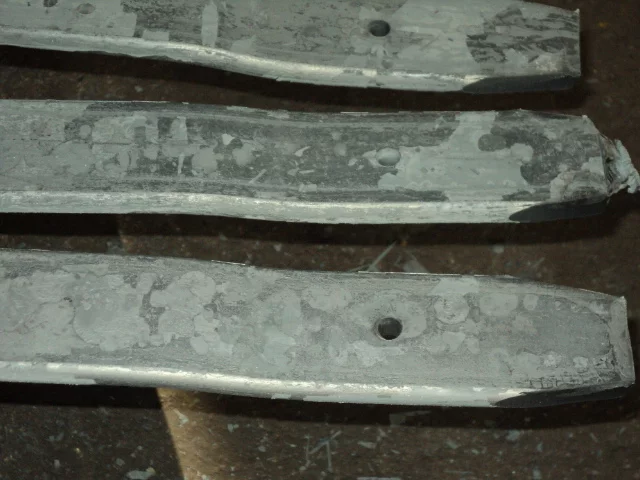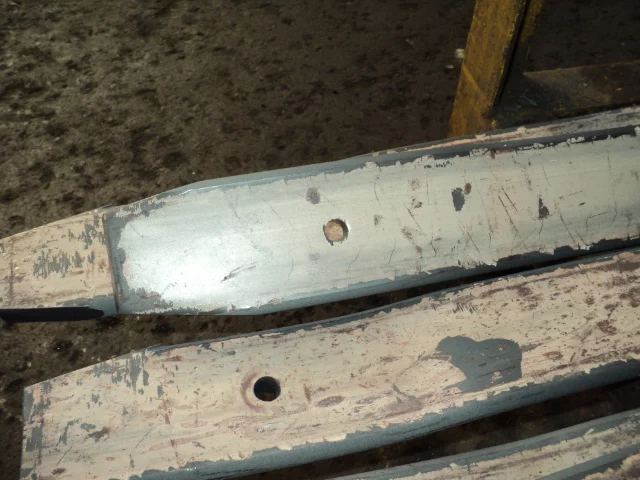Increading Yield in SS Open Die Forging and Hot Rolling
- Home
- Increasing Yield in SS Open Die Forging and Hot Rolling
How to increase yield and save costs In hot forging and
hot rolling of stainless steel and expensive alloys?

S. P. Shenoy
CEO of Steel Plant Specialities, India.
M.Tech. (Met. Engg.)
info@steelplantspecialities.com
Abstract
This article introduces a practical technique pioneered by a metallurgist from the Indian Institute of Technology. The technique enables reduction of burning loss or mill scale, and increasing yield in most kinds of steels. The technique is most successfully adopted in open die hot forging and hot rolling of stainless steel and other expensive alloy steels.
Introduction
In open die forging and hot rolling and even closed die forging of Stainless Steels and alloy steels, the major factor accounting for reduced yield is ‘burning loss’ or ‘scale loss’ or ‘mill scale’ caused due to Oxidation. Oxidation and decarburization of steel take place when billets or ingots are heated in a billet re-heating furnace, in the presence of air or products of combustion. Apart from burning loss of between 1.5% up to 4%, oxidation leads to numerous other problems like scale pit marks, bad quality surface finish of metal, rejections, cumbersome task of removal of mill scale and increased expensive operations like grinding, acid pickling, etc.
This article introduces a practical technique pioneered by an experienced Metallurgist from the Indian Institute of Technology (I.I.T.). The technique enables any kind of steel to be heated by substantially minimizing the problem of oxidation.
UNDERSTANDING BURNING LOSS DUE TO OXIDATION
For the purpose of hot rolling, when billets or ingots are heated in an open furnace in the presence of air or products of combustion, the surface phenomena of oxidation takes place. Oxidation causes immediate corrosion of steel at high temperature and creates a layer of metal-oxide, or mill scale, on the surface of the billets or ingots. Decarburisation is a simultaneous reaction that takes place along with oxidation. However, this decarburization is limited to certain grades of steel only.
OXIDATION
Oxidation of steel is caused by oxygen, carbon dioxide and/or water-vapour. The general reactions are given below :
| O2
O2
CO2
CO2 | +
+
+
+ | 2 Fe
4 FeO
Fe
3 FeO | ⇌
⇌
⇌
⇌ | 2 FeO
2 Fe2O3
CO + FeO
Fe3O4 + CO |
Oxidation of steel may range from a tight, adherent straw-coloured film that forms at a temperature of about 180°C to a loose, blue-black oxide scale that forms at temperature above about 450°C with resultant loss of metal or reduced yield.
HARMFUL EFFECTS OF OXIDATION
Oxidation leads to loss of dimensions and material as extra material allowance needs to be kept for scaling. Often, surface quality is deteriorated due to scale-pitting. This is especially true in the case of Nickel bearing grades of steel.
Throughout the industry, this burning loss or scale loss is simply treated as wastage and not many practical solutions are available to stop or reduce this wastage. Problems like thick adherent scaling or scale pit marks or decarburization are dealt by manually grinding off the scale or decarburized layer after the hot forging or hot rolling process.
PREVENTING OR REDUCING BURNING LOSS DUE TO OXIDATION
Prevention or substantial reduction of oxidation is not only better than cure, it is profitable too. However, most of the available solutions pose a number of practical difficulties. Capital-intensive special furnaces and availability of human resource for using these high-end furnaces is a major issue. Many small hot rolling Organizations cannot afford these solutions. Yet they are under mounting pressure to increase yield and reduce costs. Use of protective anti-scale coating has proven to be a logical solution to the problem of scaling and decarburization in open die hot forging and hot rolling.
Benefits of anti-scale coating; Industrial case studies and success stories.
Coating eliminates need of salt bath or controlled – atmosphere equipment in many cases. Considerable savings in capital investment and operating costs are enabled by use of anti-scale coating. Due to prevention of decarburization, uniform surface hardness is achieved. Rejected components can be salvaged. Large savings are possible when plates of expensive alloy steel can be re-heat treated by using the anti-scale coating.
Figure to the right explains the benefits of using coating during hot forming and solution annealing of stainless steel pipe fittings. Due to prevention of oxidation even in an ordinary oil fired furnace, pickling time could be reduced by 75%. Buffing can be eliminated or minimized in many cases. In manufacturing process of shearing blades of expensive high carbon, high chromium grade steel, grinding allowance is substantially reduced when protective coating is used during heat treatment. Some other distinct case studies are enlisted below.

- Prevention of quench cracks:

Forgings like knuckle joints and crank shafts when heat treated in furnaces of oxidizing atmosphere are susceptible to quench cracking. Quench cracks appear when stresses generated during quenching are higher than tensile strength of thin sections of forgings and due to differential quench severity at different areas. Chrome-moly grades of steel are most susceptible to quench cracks, which usually occur in the gear-end portion of the crankshaft. By coating the gear-end with an anti-scale coating, the cracking is prevented. By coating the gear-end with anti-scale coating, cracking could be effectively prevented. Reputed forgers of largest crank shafts in India use this technique.
2. Reduction in shot blasting time after heat treatment:
Operations like shot blasting, grinding, acid pickling, etc. do not add value, are expensive and time consuming procedures. These operations are necessary to remove adherent scaling from components and to enhance aesthetic appeal of forgings. Especially in the case of crevice in a 4-wheeler crank shaft or hollow parts like spindles, if scaling occurs in the inner diameter, shot blasting will be ineffective as shots will pass through the hollow profile and not clean the scale. Manual grinding is necessary to remove the scale from inner diameter of components like spindles and from crevice of 4-wheeler cranks shafts. Time required for such operations can be substantially reduced if a coating is applied on components and their hollow profiles before heat treatment. Aesthetic appeal of components is automatically enhanced without much effort as scaling is either prevented or reduced by using anti scale coating.
- Salvaging fully machined components by protecting during re-heat treatment:

Often, fully machined forgings need to be re-heat treated for metallurgical reasons. However, there is no material allowance left for further scaling to take place and for subsequent machining or shot blasting. In such cases, even small amount of scaling can render components to be scrapped. Use of anti-scale compound ensures prevention of scaling during re-heat treatment. Hence, huge losses can be prevented by salvaging fully machined components. Aesthetic appeal of components is retained. Coating itself can be removed after heat treatment by cleaning the forging with diesel, emery paper brushing or light wire brushing.
4. Heat treatment of pressure vessels:

Valve areas of pressure vessels are critical and need to be protected from scaling during thermal cleaning and heat treatment. This is achieved by use of anti-scale coating being applied only on areas where scaling needs to be prevented.
5. Reducing decarburization during hot forging & hot rolling:
During hot rolling of special grades of steel where decarburization needs to be kept in check, unforeseen conditions like mill breakdown and unplanned downtime may arise. Even when the plant is closed for weekly holiday, furnace is shut off abruptly, leaving billets inside the furnace. In these cases, billets or ingots are left in furnace and are subjected to prolonged heating leading to decarburization and excessive scaling. In both cases, applying protective anti-scale coating on billets before charging them into the re-heating furnace ensures that billets are protected from decarburization. Reduced decarburization on automobile leaf springs leads to increased fatigue strength of leaf springs and greater reliability. Leaf springs heated after applying protective anti-scale coating show substantially reduced decarburization and scaling as show in adjoining image.

Not coated leaf springs. Heavy scaling observed after heat treatment.

Coated leaf springs. Very low scaling observed after heat treatment. Coating has remained, showing its efficacy.
SUMMARY
- Use of protective coating has established itself as an effective technique of preventing oxidation and decarburization during heat treatment, hot forging and hot rolling.
- It has unleashed a number of additional benefits like ability to salvage by re-heat treatment, elimination of post-heat treatment operations like grinding, shot blasting, acid pickling, etc.
- The coating process has simplified and accelerated many metallurgical heat treatment operations, saving a fortune in capital investment, reducing costs and improving quality.


